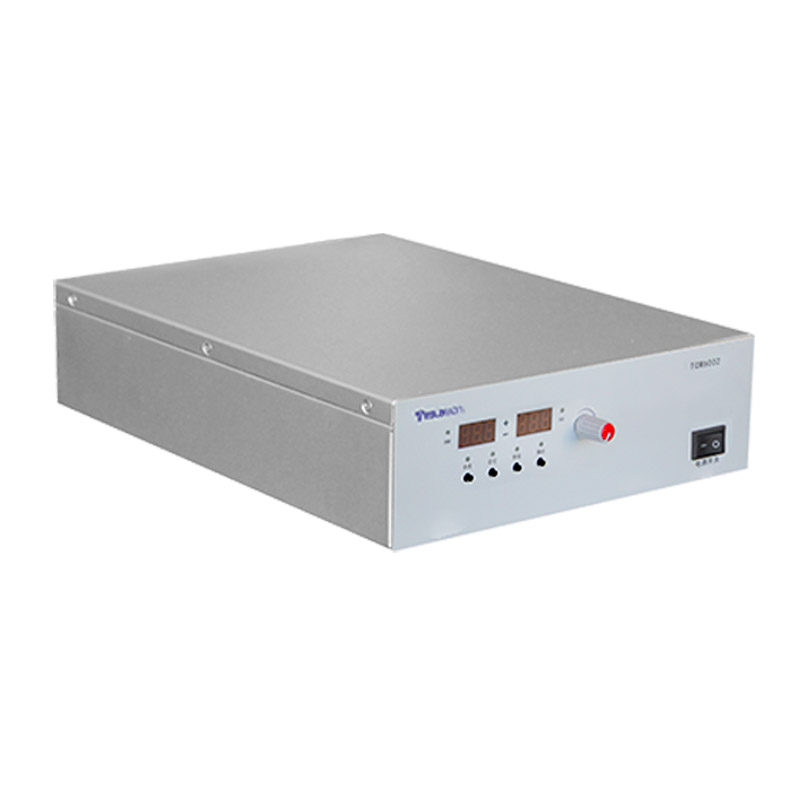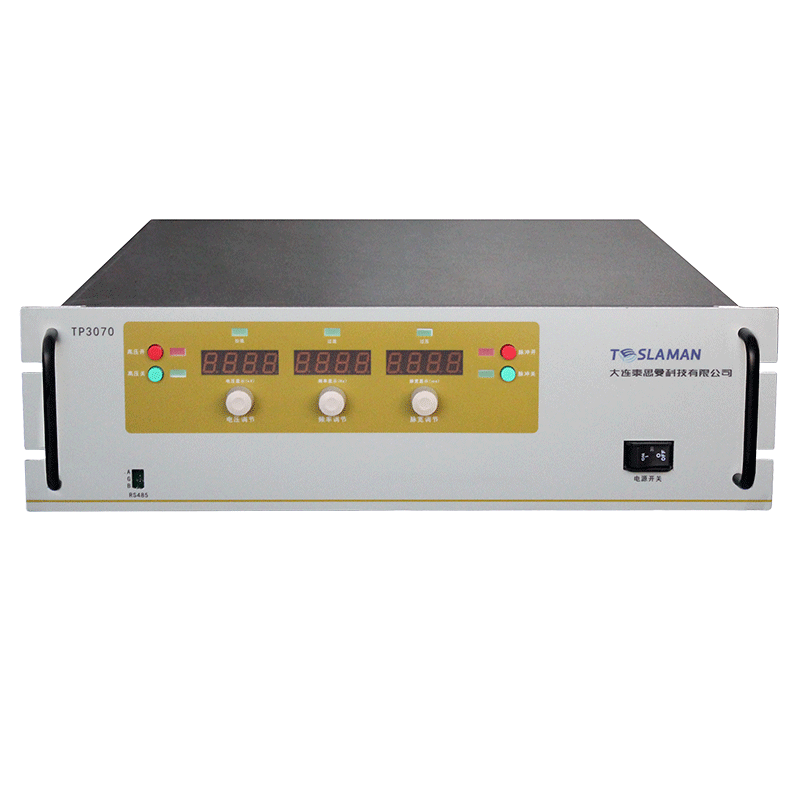Application and Challenges of High-Voltage Generators in Materials Science
In the field of materials science, high-voltage environments have emerged as a unique physical field for regulating material structure and properties. High-voltage generators, by precisely producing and controlling high-voltage outputs, provide research platforms under extreme conditions for material synthesis, characterization, and modification. These devices operate on principles such as electric field effects, electron beam acceleration, or plasma excitation, enabling the creation of stable high-voltage environments in both laboratory and industrial settings. Their technical core involves multiple dimensions, including power supply topology design, insulation material optimization, and intelligent control algorithm development.
1. Core Application Scenarios of High-Voltage Generators in Materials Science
1.1 Synthesis of New Materials and Crystal Growth
High-voltage environments significantly reduce the activation energy barrier for material synthesis, promoting directional atomic diffusion and bond reformation. In ceramic preparation, high-voltage electric field-assisted sintering technologies (e.g., spark plasma sintering, SPS) can lower sintering temperatures by over 30% while inhibiting abnormal grain growth, yielding nanoscale uniform microstructures. For semiconductor materials, high-voltage-assisted vapor phase epitaxy (HVPE) enhances gas molecule dissociation efficiency, enabling high-quality epitaxial growth of wide-bandgap semiconductors (e.g., silicon carbide, gallium nitride) with defect densities an order of magnitude lower than traditional methods. In artificial diamond synthesis, the supercritical environment created by high-voltage generators and high-temperature chambers accelerates the phase transformation kinetics from graphite to diamond, reducing synthesis cycles to 50% of conventional processes.
1.2 Material Surface Modification and Coating Deposition
High-voltage plasma technology is a key tool in material surface engineering. Low-temperature plasmas generated by dielectric barrier discharge (DBD) or radio-frequency glow discharge devices introduce reactive groups (e.g., hydroxyl, carboxyl) onto material surfaces, significantly improving hydrophilicity or adhesive properties. For example, high-voltage plasma etching increases the surface roughness of carbon fibers by 2-3 times and forms nanoscale trench structures, enhancing fiber-resin interfacial shear strength by over 40%. In hard coating applications, high-power impulse magnetron sputtering (HiPIMS) achieves dense diamond-like carbon (DLC) coating deposition through highly ionized metal plasmas, with film-substrate adhesion exceeding 50N and wear life extended 10-fold compared to traditional sputtering.
1.3 Study of Material Dynamic Mechanical Behavior
The coupling of high-voltage environments with dynamic loads provides unique insights into material failure mechanisms. High-voltage modules integrated into Split Hopkinson Pressure Bar (SHPB) systems enable impact pressure loading exceeding 100 GPa on microsecond timescales, simulating material phase transitions and fracture processes under astrophysical impacts or explosive loads. Studies show that metallic glasses form nanocrystalline layered structures under high-voltage impact, with compressive strength 30% higher than under static compression. Additionally, in-situ high-voltage observation technologies (e.g., high-voltage transmission electron microscopy, HVTEM) with real-time imaging track atomic-scale structural evolutions, providing critical data for multi-scale constitutive model development.
2. Key Challenges in High-Voltage Generator Technology
2.1 Equipment Reliability under Extreme Conditions
High-voltage environments impose strict requirements on materials due to strong electric fields, thermal effects, and chemical corrosion. Traditional epoxy resin insulators are prone to electrical treeing aging under long-term high voltage, degrading insulation performance. New nanocomposite insulators (e.g., Al₂O₃/epoxy) enhance dielectric strength to 40 kV/mm but face interfacial debonding risks under temperature gradients exceeding 50 K/mm. Sputter corrosion of high-voltage electrodes also impacts longevity; diamond-like coatings deposited via magnetron sputtering reduce corrosion rates to 0.1 μm/h, but thermal expansion coefficient matching (<5×10⁻⁶/K difference) between coatings and substrates remains a technical challenge.
2.2 Precise Control of Multiphysical Field Coupling
Materials research often requires synergistic high-voltage, temperature, and magnetic field effects. Existing equipment struggles with field uniformity, such as 15% electric field strength deviations between central and edge regions in 500 kV systems. Intelligent compensation algorithms (e.g., adaptive PID control) based on finite element simulation improve uniformity to ±3%, but real-time response requirements (<10 ms) demand higher hardware computing power. The energy transfer mechanisms in multiphysical fields are poorly understood—for example, the influence of high-voltage electric fields on thermal conductivity (e.g., 8-12% changes in metals at 10 kV/mm) lacks universal theoretical models, hindering process parameter optimization.
2.3 Green Manufacturing and Energy Efficiency Improvement
Traditional high-voltage equipment typically has energy efficiencies below 65%, with over 30% energy loss in LC oscillation circuits of pulse power units. Solid-state high-voltage power supplies based on gallium nitride (GaN) devices increase efficiency to 92%, but dynamic resistance degradation (ΔR/R₀>15%) in wide-bandgap semiconductors under nanosecond pulses remains unsolved. Environmentally, sulfur hexafluoride (SF₆) insulation gas has a global warming potential 23,500 times that of CO₂. Developing eco-friendly insulating media (e.g., perfluoro ketones) and recycling technologies is urgent, though new dielectrics still have lower breakdown field strengths (25 kV/mm vs. SF₆'s 30 kV/mm).
3. Future Development Trends
High-voltage generator technology will evolve toward intelligence, integration, and sustainability. Machine learning algorithms will enable autonomous optimization of high-voltage process parameters—for example, convolutional neural networks (CNNs) predicting optimal voltage waveforms in material synthesis, reducing development cycles by 50%. Modular design principles drive miniaturization, with portable high-voltage test platforms (<0.1 m³ volume) achieving 100 kV outputs for in-situ field material characterization. In energy efficiency, superconducting energy storage-based pulse power systems may boost energy utilization above 95%, laying groundwork for large-scale industrial applications.
In summary, high-voltage generators, as core equipment in materials science, will continue to advance frontier fields like new energy materials and electronic information materials through technological breakthroughs. Addressing challenges in reliability, multiphysical field control, and green manufacturing will require interdisciplinary collaboration and exploration of new physical mechanisms.




















